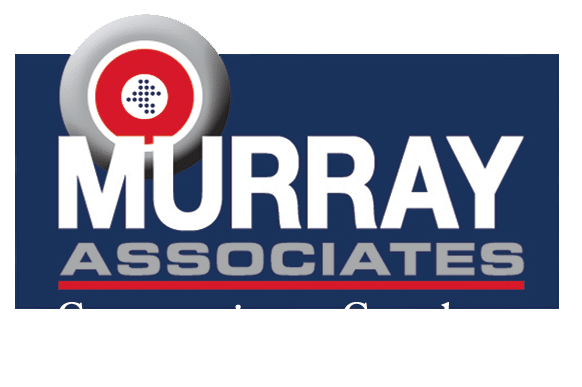
Updated March 2024
Become the Ultimate Eavesdrop Detector
The average person’s guide to stopping eavesdropping snoops.
Your eavesdropping snoop can be stopped.
Hidden cameras, listening devices, GPS tracking, and other electronic surveillance…You don’t have to put up with eavesdroppers monitoring your every move and leaking private information.
The problem is, most people don’t know the best first step to solving their privacy issues.
They typically just hire a Technical Surveillance Countermeasures (TSCM) bug sweep team and hope for the best. But the real best first step is FREE.
With our help, you can become your very own eavesdrop detector.
Let’s start by making a list of your primary goals:
-
Prove your information loss is real.
-
Prove the information could only have been obtained via illegal means.
-
Determine the methods and techniques used to obtain your information.
-
Show a “cause and effect” relationship between the criminal and the crime. This means collecting circumstantial evidence which proves the eavesdropping snoop is the culprit.
Now, to accomplish these goals and become the ultimate eavesdrop detector, conduct each of the following Spybuster Tip #303 tests. Use a different, very specific, piece of information each time. Think of this as a sting operation, and you are laying out bait.
The type of electronic eavesdropping, or other form of snooping, your eavesdropper is using will be revealed—you will know by which tidbit of your bait information surfaces and gets back to you.
Spybuster Tip #303 — Test for Leaks!
-
Salt one-on-one conversations with specific bits of information, unique to each person. This will reveal false friends with loose lips when the information surfaces.
-
Prearrange a telephone conversation with a trusted party. Discuss one unique and interesting item. If word gets out, you can suspect a wiretap, smartphone spyware, or other listening devices. Although it is not likely, it is possible the wiretap or spyware may be on the other end of the call. Do this with a trusted person who you know would not be tapped. Remember, never use the same piece of information twice. Keeping a written log will help you to help keep track. It may also be valuable later in legal proceedings.
-
Simulate one side of a phone call, landline or mobile. (You do not really have to use the phone.) Pretend you are talking to someone and mention something which is likely to get back to you. This test reveals if there was a room bug or voice recorder in the vicinity of where you were talking.
-
Write notes to leave on a table or desk overnight. When word gets back, you will know you had a snoop—and on which night.
-
Create interesting notes to leave crumpled or torn in half in the trash can. This detects surveillance via garbage archeology—a very common spy trick used by snoops, private investigators, and economic espionage spies.
-
Drive to an unusual location, keeping your mobile phone turned entirely off. If word gets back about where you went, suspect a GPS tracker, or private investigator conducting surveillance.
-
You can also solve your concerns about video voyeurism yourself. Just learn a little bit about where to look and what to look for. You can find an online, self-paced, video-based, spycam detection training course here. The course is entertaining and takes about an hour to complete.
This group of tests is suitable under most circumstances, but your particular situation may require a slightly modified approach. Now that you understand the basic strategy for stopping eavesdropping snoops, you can come up with your own plan.
Keep a written log of your tests, and the reactions they may create. Also, include in your notes observations which seem suspicious (people, vehicles, etc.).
Of course, don’t do anything which would jeopardize your personal safety, or tip your hand. Include dates, exact times, descriptions, circumstances, and photos (if possible).
By conducting these eavesdrop detector tests, you accomplish several objectives:
-
You determine if information loss is occurring. If so, you determined the cause of the loss; by electronic surveillance, or non-electronic means instead of by coincidence.
-
Your test will indicate the method your eavesdropping snoop used (cell phone spyware, room bug, GPS tracker, etc.).
-
You will have a written log of circumstantial evidence which ties the eavesdropping snoop to the crime.
Important: If you are getting positive results, conduct more tests using different pieces of information each time. You want to collect at least three positive tests. This refutes an eavesdropping snoop’s “This is all just a coincidence!” defense upon being accused. Your three (or more) positive tests will make the eavesdropper look unreliable and untrustworthy.
Once you have enough circumstantial evidence, take your documentation to an attorney. Ask for recommendations on the best way to proceed with prosecuting your case (criminal, civil, or both).
Because history proves an eavesdropping snoop officially accused of their actions, ceases the eavesdropping, snooping, and stalking.
Eavesdrop Detector FAQs
Q: Why not conduct a Technical Surveillance Countermeasures bug sweep before conducting your own tests?
A: Even if an eavesdropping device is found, all you really have is a piece of hardware, and your eavesdropping snoop remains free to do it again. If an eavesdropping device isn’t found, all you really have is continued uncertainty and less money. Plus, there’s no guarantee your information loss involves electronic surveillance bugging or tracking devices. Leaks can occur in a variety of non-electronic ways, too. So before you let your budget take a hit, try addressing your concerns on your own.
Q: How do I flush common spyware from my smartphone?
A: If you have an iPhone, simply reload the iOS operating system. To test Android phones for spyware, try this for starters. You can avoid these problems altogether by reading our smartphone eavesdrop security checklist.
Q: What are some common tactics used to steal my information?
A: Trespassing, posing as an employee (if you’re a business), wiretapping, hacking, and Phishing tactics are all standard practices in the corporate world. Fake emails are also used to trick individuals into revealing confidential information or clicking malicious links.
Q: What else can I do?
• Read our security reports, How to Block Out Listening Devices.
• More security tips, spy and privacy news at spybusters.blogspot.com. Be sure to sign up for the free email updates.
• Concerned about Spy Cameras? Learn how to detect them.
###
Murray Associates is an independent security consulting firm, providing eavesdropping detection and counterespionage services to business, government and at-risk individuals.
Headquartered in the New York metropolitan area, a Murray Associates team can assist you quickly, anywhere in the United States, and internationally.



